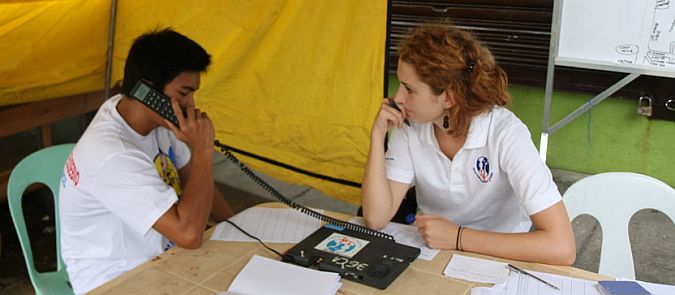Frédéric Leduc, Albane Coeurquetin and Fanny Gaborit, all of whom are
Master’s students at the AIT’s School of Engineering and Technology
(SET), where they study Information and Communication Technology,
rushed to disaster locations following a call from TSF. While Frédéric
is in Samoa, Albane and Fanny are based in Manila.
According to Oisin Walton, TSF delegate for Asia and the Pacific, TSF
has set up communications in Manila (National Disaster Coordinating
Council - affected by Tropical Storm Ketsana) and Tuguegarao (Regional
Disaster Coordinating Council - affected by Typhoon Parma) with
Internet, phone and fax lines to support coordination by the government
and the United Nations. “We are running calling operations for those
affected in Manila and will soon be offering the same service in the
North which has been affected by Typhoon Parma”, he said. Out of the
six TSF volunteers at Manila, two are from AIT.
Similarly, following the Samoa tsunami, TSF has provided ICT support
at the request of the United Nations Disaster Assessment and
Coordination (UNDAC) team. TSF is supporting UNDAC and the whole
humanitarian community including UN and governmental agencies, local
and international NGOs. At Samoa, out of two TSF volunteers, one is
from AIT. A Telecom Centre has been installed in WHO (World Health
Organization) offices in order to enable the United Nations agencies to
optimize and coordinate the first phase of the emergency response. TSF
ensured that rescue teams were equipped with sufficient communications
means to be able to respond efficiently and adequately to the disaster.
At Indonesia, a team of four volunteers has been deployed by the TSF
headquarters.
The Asia-Pacific base of TSF is located at AIT, Thailand.

AIT student and TSF volunteer Albane
Coeurquetin (right) overseeing relief work at Manila, Philippines.
Photo courtesy: TSF
